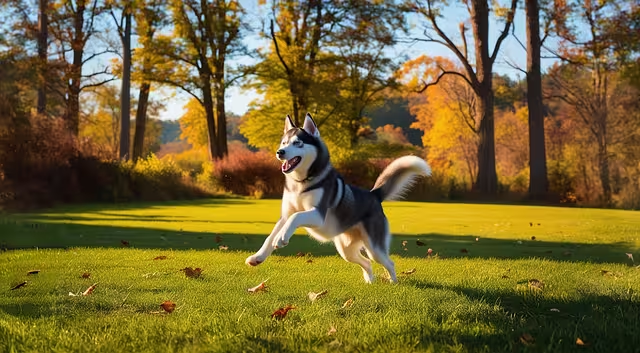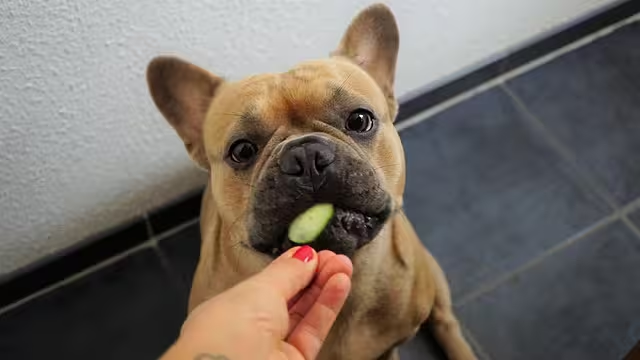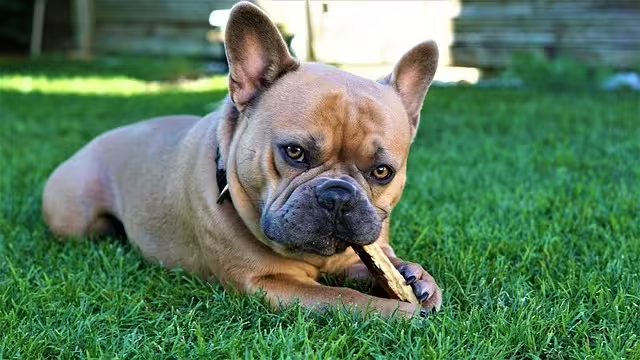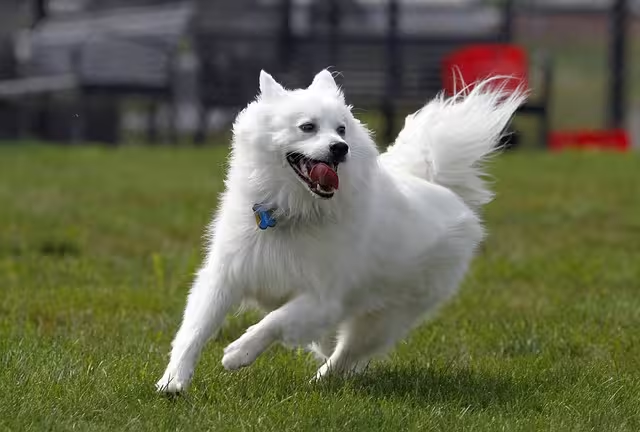Caring for our dogs encompasses various responsibilities, one of the most critical being their nutrition· Every dog owner wants their furry friend to thrive, and a significant aspect of this is understanding which foods are safe and which can be harmful· This blog post will explore seven foods that should never be given to pets, providing insights into the reasons for their toxicity, the symptoms to watch for, and practical tips for maintaining your dog’s health·
Understanding the Importance of Canine Nutrition
Dogs, like humans, require a balanced diet to maintain their health and well-being· However, what may be safe and nutritious for people can be dangerous for canines· Different dog breeds, each bred for specific purposes, come with unique dietary needs influenced by factors such as size, age, activity level, and breed characteristics· Understanding these differences, including the specific needs of each dog breed, is essential for providing optimal nutrition and care for your popular canine companions·
Why Breed-Specific Nutrition Matters
The American Kennel Club (AKC) emphasizes the importance of understanding the nutritional requirements of various dog breeds· For instance, active breeds like Border Collies need higher levels of protein and calories compared to less active breeds like Bulldogs· Additionally, some dog breeds, such as terriers, are known to be predisposed to specific health issues based on their genetic makeup, which can further influence their dietary needs·
When considering what to feed your furry friend, it is essential to not only focus on what is nutritious but also on what is safe· Certain foods can lead to adverse health effects, ranging from mild gastrointestinal upset to severe, life-threatening conditions·
1· Chocolate: A Sweet but Dangerous Treat
Chocolate is one of the most widely recognized toxic foods for canines· It contains two substances, theobromine and caffeine, both of which can be harmful to canines· The level of toxicity is primarily determined by the type of chocolate consumed and the size of the pet· Recent studies indicate that certain dog breeds may be more sensitive to these substances, highlighting the importance of understanding breed-specific risks when it comes to chocolate ingestion·

Types of Chocolate and Their Risks
- Dark Chocolate: This type has the highest concentration of theobromine, making it particularly dangerous for canines· Even small amounts can lead to toxicity·
Baking Chocolate: Even more concentrated than dark chocolate, this type poses a severe threat to pets·
Milk Chocolate: While it contains less theobromine than dark chocolate, it can still be harmful in larger quantities·
Symptoms of Chocolate Poisoning
If a pet ingests chocolate, it is crucial to monitor for symptoms, which may include:
- Vomiting
Diarrhea
Rapid breathing
Increased heart rate
Seizures
The severity of symptoms will depend on various factors, including the amount and type of chocolate consumed, as well as the size of the dog· If you suspect your canine has ingested chocolate, seeking veterinary assistance immediately is essential· Some dog breeds, particularly those known for their mental sensitivity, may exhibit symptoms more rapidly, making prompt action even more critical·
2· Grapes and Raisins: A Hidden Threat
Many pet owners are surprised to learn that grapes and raisins are toxic to dogs· Even tiny amounts can lead to serious health issues, including acute kidney failure· The exact substance responsible for this toxicity is still unknown, but the risk is significant across various dog breeds· Some breeds are particularly vulnerable, highlighting the need for pet owners to be aware of the dangers these seemingly harmless foods can pose in the world of canine health·
Understanding the Risks
- Kidney Damage: Ingesting grapes or raisins can cause severe kidney injury, which can be fatal if not treated promptly·
All Breeds at Risk: All dog breeds are susceptible to this toxicity, although smaller breeds may exhibit symptoms more quickly due to their size·
Symptoms of Grape and Raisin Toxicity
Signs that a pet may have consumed grapes or raisins include:
- Vomiting
Diarrhea
Lethargy
Loss of appetite
Abdominal pain
If you notice any of these symptoms or suspect your furry friend has ingested grapes or raisins, contacting a veterinarian immediately is crucial· Veterinarians often provide important notes on the specific risks associated with different dog breeds, as some breeds may be more susceptible to the toxic effects of these fruits than others· Prompt action can make a significant difference in your dog’s health outcome·
3· Onions and Garlic: Common Kitchen Ingredients to Avoid
Onions and garlic are staple ingredients in many kitchens, but they can pose serious health risks to dogs· Both foods belong to the allium family and contain compounds that can damage red blood cells, leading to anemia· Certain dog breeds, especially those called “sensitive” breeds, may be more affected by these compounds, making it essential for pet owners to avoid feeding these foods to their canines·
The Dangers of Allium Foods
- Onions: Whether they are raw, cooked, or dehydrated, onions can be harmful to pets·
Garlic: Even tiny amounts can be toxic, particularly for certain breeds that are more sensitive to these compounds·

Recognizing Symptoms of Toxicity
If a pet ingests onions or garlic, watch for the following symptoms:
- Weakness
Lethargy
Pale gums
Reduced appetite
Vomiting
If you suspect your furry friend has consumed onions or garlic, consult your veterinarian as soon as possible· It’s important to find out how these foods may affect different dog breeds, as some breeds may be more vulnerable to the harmful effects· Prompt veterinary care can help mitigate the risks associated with these toxic ingredients·
4· Avocado: A Fruit to Avoid
While avocados are often considered a superfood for humans, they are not safe for canines· Avocados contain persin, a substance that can cause gastrointestinal upset and other health issues in dogs· It’s important to meet the dietary needs of various dog breeds, as some may be more sensitive to persin than others· Avoiding avocados can help ensure your dog’s health and well-being·
Understanding Persin and Its Effects
- Toxicity Levels: The amount of persin can vary within different parts of the avocado, but it is best to avoid giving any part of the fruit to your furry friend·
Risk of Pancreatitis: The high fat content in avocados can also contribute to pancreatitis, especially in breeds that are prone to this condition·
Symptoms of Avocado Toxicity
Signs that your canine may have ingested an avocado include:
- Vomiting
Diarrhea
Lethargy
Abdominal discomfort
If you suspect your canine has eaten avocado, it’s essential to monitor them closely and consult a veterinarian if symptoms develop· Thinking about the specific looks and characteristics of different dog breeds can help you assess how they might react to avocado ingestion, as some breeds may be more susceptible to its effects· Prompt attention can make a significant difference in their recovery·
5· Alcohol: A Serious Hazard
Alcohol poses a significant risk to pets and can lead to severe health issues, even in tiny amounts· Dogs metabolize alcohol differently than humans, making them more susceptible to its toxic effects· Understanding how different dog breeds react to alcohol is crucial, as certain dog breeds may be at a higher risk due to their size or metabolism· Keeping alcohol out of reach is essential for all dogs·
The Dangers of Alcohol Consumption
- Brain and Liver Damage: Alcohol can cause significant damage to both the liver and the brain in dogs·
Symptoms of Intoxication: Symptoms can appear quickly and may include vomiting, diarrhea, difficulty breathing, seizures, and even coma·
Keeping Alcohol Away from Dogs
To keep your dog safe, ensure that all alcoholic beverages are securely stored out of reach· If you suspect that your canine has ingested alcohol, prompt veterinary attention is critical· Living with different dog breeds means understanding their unique behaviors and tendencies, which can help prevent accidental ingestion of harmful substances like alcohol· Taking proactive measures is essential for their health and safety·
6· Caffeine: A Hidden Danger
Caffeine, found in coffee, tea, and certain energy drinks, is another substance that should be kept away from pets· Similar to chocolate, caffeine contains compounds that can lead to serious health complications· Different dog breeds may react differently to caffeine, with some dog breeds being more sensitive to its effects· It’s important to be vigilant and ensure that caffeinated products are kept out of reach to protect your dog’s health·
Symptoms of Caffeine Toxicity
If a pet consumes caffeine, be on the lookout for the following symptoms:
- Restlessness
Rapid heart rate
Muscle tremors
Vomiting
Preventive Measures
To prevent caffeine toxicity, make sure that all caffeinated products are stored securely away from your pets· If you suspect your pet has consumed caffeine, seek veterinary care promptly· Understanding the intelligence of different dog breeds can also help you recognize unusual behavior that might indicate caffeine ingestion, allowing for quicker intervention and care·
7· Xylitol: A Sweetener to Watch Out For
Xylitol is a sugar substitute commonly found in many sugar-free products, including gum, candies, and baked goods· It is highly toxic to dogs and can trigger a rapid insulin release, leading to low blood sugar levels (hypoglycemia)· The bond between dogs and their owners is crucial, as understanding the risks associated with different dog breeds can help prevent accidental exposure to harmful substances like xylitol· Being aware of these dangers strengthens the bond and ensures a healthier life for your pet·
The Dangers of Xylitol
- Rapid Insulin Release: Even tiny amounts of xylitol can cause a dangerous drop in blood sugar levels, leading to severe health issues·
All Breeds Affected: All dog breeds are at risk, but smaller breeds may show symptoms more rapidly due to their size·
Symptoms of Xylitol Poisoning
If your canine consumes xylitol, watch for these symptoms:
- Vomiting
Loss of coordination
Seizures
Coma
Immediate veterinary assistance is necessary if you suspect your canine has ingested xylitol· The spirit of responsible pet ownership means being vigilant about the health risks associated with different dog breeds, as some may be more vulnerable to the toxic effects of substances like xylitol· Quick action can make all the difference in ensuring your dog’s well-being·

Practical Tips for Keeping Your Dog Safe
- Educate Yourself: Understanding which foods are harmful is the first step in ensuring your dog’s safety· Resources from the Canine Association and local kennel clubs can provide valuable insights into canine health and nutrition·
- Read Labels Carefully: Always examine the ingredient list of any human food before sharing it with your canine· Look for hidden ingredients that may be harmful·
- Create a Safe Environment: Ensure that potentially harmful foods are kept out of reach· Secure pantry doors and make sure that trash cans are dog-proof·
- Regular Veterinary Check-Ups: Schedule routine visits to the veterinarian to monitor your dog’s health and discuss their dietary needs· Your vet can provide personalized advice based on your dog’s breed and health status·
- Know Your Dog’s Breed: Understanding the specific dietary requirements and sensitivities of your dog’s breed can help you make informed decisions about their food·
- Provide a Balanced Diet: Focus on feeding your pet high-quality, breed-appropriate foods· Consult your veterinarian to determine the best diet for your dog’s unique needs·
- Monitor Treats and Snacks: Be cautious about what you offer your pet as treats· Stick to vet-approved snacks and avoid human foods that may be harmful·
- Keep Emergency Contacts Handy: Have the contact information for your veterinarian and a nearby emergency animal clinic readily available· If your canine consumes something harmful, quick access to professional help can make a difference·
Conclusion
As a responsible pet owner, understanding which foods can harm your pet is vital for their health and well-being· The seven foods discussed in this blog—chocolate, grapes and raisins, onions and garlic, avocado, alcohol, caffeine, and xylitol—should never be given to your pet· Different dog breeds may react differently to these foods, but the risks are significant across the board· Always prioritize your dog’s safety by educating yourself and consulting with professionals when needed·
By being informed and proactive, you can create a safe and loving environment for your dog, ensuring they thrive for years to come· Remember, a healthy canine is a happy dog!
Additional Resources for Dog Owners
For more information on pet care and nutrition, consider exploring resources from the American Canine Club, local kennel clubs, and reputable veterinary organizations· They offer valuable insights into dietary needs specific to various dog breeds, helping you make the best choices for your pet·
In summary, being a well-informed pet owner is key to ensuring your furry friend lives a long and healthy life· By taking the necessary precautions and understanding the harmful foods, you can contribute significantly to your pet’s overall well-being· Always make informed decisions, keep your dog’s health as a top priority, and enjoy the many rewarding moments you share with your furry companion!







